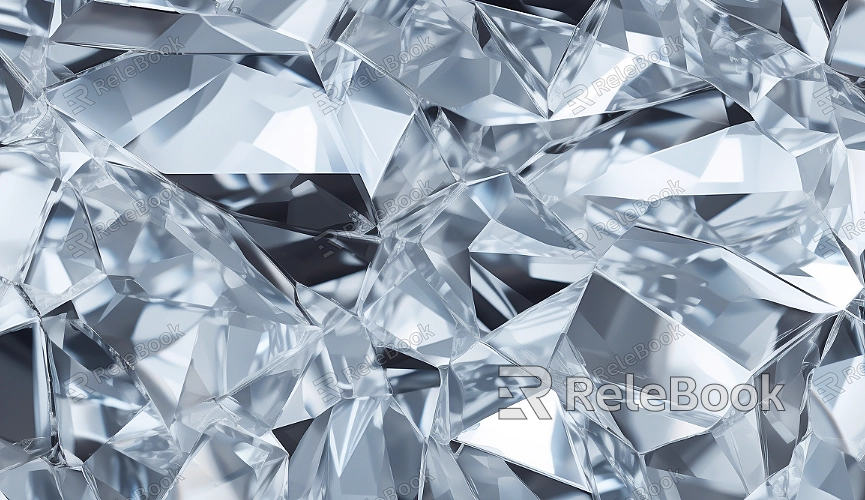How to Get Rid of Glossiness on 3D Textures
When 3D textures exhibit excessive glossiness or when you need to remove shine for a more natural look, this issue becomes crucial in rendering and material design. High glossiness can make certain materials appear unrealistic, such as skin, fabrics, or wood surfaces. Whether you're working on game design, film production, or product visualization, properly managing the glossiness of textures can enhance the realism of your work. Popular 3D modeling software like Blender, Maya, 3ds Max, and Substance Painter offer tools to adjust or remove glossiness from 3D textures. In this article, we’ll provide effective methods to eliminate unwanted glossiness and improve your rendering quality and workflow efficiency.

1. Identify the Source of Glossiness
Before removing glossiness from 3D textures, it's essential to identify its source. This allows for more targeted adjustments to the materials and rendering settings. There are a few common causes of unwanted glossiness:
Material Settings: Many 3D software packages have material properties like Glossiness or Roughness that control how shiny a surface appears. If these settings are too high by default, the texture will look too shiny.
Texture Properties: Textures with built-in reflection or specular information can contribute to an overly glossy appearance. Some texture maps, especially those with specular highlights, may intensify glossiness.
Lighting Effects: The intensity and placement of light sources can cause excessive reflection, making the surface look unnaturally shiny.
By reviewing the material and texture settings, you can pinpoint the cause of the glossiness and make the necessary adjustments.
2. Adjust Glossiness or Roughness Settings
The first step to removing glossiness is to modify the glossiness or roughness settings within the material. Here’s how you can do this in popular software:
Blender: In Blender, adjust the "Specular" (mirror reflection) and "Roughness" values in the material settings to control glossiness. Reducing the Specular value will decrease reflections, while increasing the Roughness value will make the surface rougher, reducing the shiny appearance.
Maya: In Maya, the glossiness is controlled through the “Phong” or “Blinn” shader settings. Lowering these values reduces the surface's specular reflection, giving it a matte look.
3ds Max: In 3ds Max, you can adjust the "Glossiness" value to control the intensity of reflections. Lowering this value will effectively remove unwanted glossiness.
By adjusting these parameters, you can gradually reduce the glossiness on your textures until you achieve the desired matte effect.
3. Edit Reflection and Specular Channels in Textures
If adjusting the material settings doesn’t completely remove the glossiness, the next step is to directly modify the texture itself, particularly its reflection or specular channels. Here's how to do it:
Edit the Texture Image: Use Photoshop or Substance Painter to modify the reflection or specular channel. Lowering the brightness in these channels can reduce surface reflections and minimize glossiness.
Use Grayscale Maps: You can create or modify grayscale maps that control the reflection strength. This approach allows you to fine-tune which areas of the texture need less glossiness. For example, skin textures may need less reflection in certain areas, while other regions might retain subtle highlights.
These adjustments will help you precisely control the glossiness in specific areas, giving the texture a more natural and consistent appearance.

4. Fine-tune Lighting Settings
The lighting setup can significantly affect the glossiness of textures. Adjusting the intensity and angle of light sources can help minimize unwanted reflections and reduce glossiness:
Adjust Light Intensity: Too strong a light source can cause excessive reflections, making the surface appear overly shiny. Try lowering the intensity of the light or repositioning it slightly to reduce reflected light on the surface.
Use Diffuse Lighting: Using softer light sources, such as ambient or diffuse light, will reduce the intensity of specular reflections, giving the surface a more natural look without excessive shine.
By carefully adjusting the lighting setup, you can further refine the texture’s glossiness and make it look more realistic.
5. Use Roughness Maps
Roughness maps are another effective tool for controlling glossiness. By applying a roughness map to the model, you can control the glossiness in different areas of the texture:
Fine-Tuned Roughness Adjustments: High-quality roughness maps can help you simulate realistic surfaces, such as skin, fabrics, or wood. Areas with higher roughness values will appear matte and less glossy.
Edit Roughness Maps: If the existing roughness map doesn’t work well, you can edit it using software tools to gradually adjust the map. This can make the texture’s glossiness more uniform across the surface.
Using roughness maps effectively will help you reduce unwanted shine and add more depth and realism to your textures.
6. Get High-Quality Texture Resources
If you're looking to quickly access high-quality textures, you can visit Relebook. Relebook offers a vast library of textures, including options for controlling surface glossiness, which can save you time and help you find the perfect textures for your project. Visit Relebook’s Texture Library to enhance your rendering workflow today!
By following the methods outlined in this article, you can effectively remove glossiness from 3D textures. Whether adjusting material settings, editing texture maps, or fine-tuning lighting and roughness maps, each step will help you achieve more realistic and natural-looking renders.

